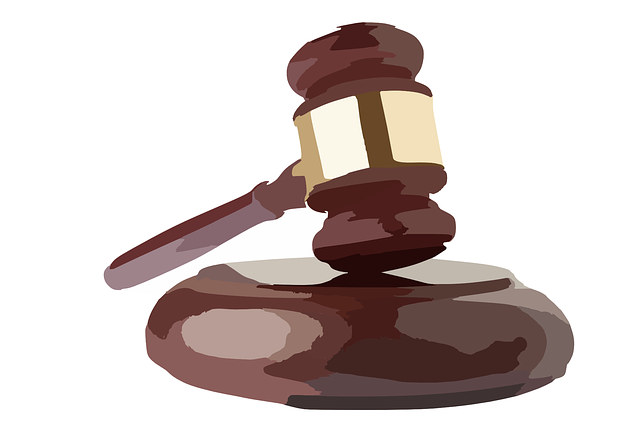Contempt proceedings arise when individuals or entities fail to comply with court orders, leading to potential fines and imprisonment. To avoid these repercussions, clients and representatives must understand the importance of strict compliance with legally binding orders. Effective strategies involve clear order understanding, proactive communication with legal representatives, staying informed about changes, attending hearings, meeting deadlines, and providing evidence of good-faith efforts towards compliance. Notable case studies like Brown v. Court (2018) and Smith v. Prosecutor (2020) underscore the significance of compliance and the need for clear communication between clients and their attorneys.
Contempt proceedings, a powerful legal tool, are initiated when an individual or entity fails to comply with a court order. This article delves into the intricate world of defending client rights within these proceedings. We explore key aspects, including understanding the basis for contempt, the importance of adhering to court orders, and defining non-compliance. Through strategic insights and real-world case studies, we equip readers with valuable knowledge on navigating these legal complexities, emphasizing the crucial role of compliance with orders in mitigating potential contempt issues.
- Understanding Contempt Proceedings: When and Why They Arise
- The Role of Compliance with Orders in Avoiding Contempt
- Legal Obligations: What Constitutes Non-Compliance?
- Strategies for Defending Client Rights During Contempt Hearings
- Case Studies: Lessons Learned from Notable Contempt Cases
Understanding Contempt Proceedings: When and Why They Arise

Contempt proceedings are legal actions that arise when an individual or entity fails to comply with a court order. These proceedings are initiated to ensure that parties involved in legal disputes adhere to the rules and decisions set forth by the court. When a party is found guilty of contempt, it can result in various consequences, including fines, imprisonment, or both.
Contempt can occur for several reasons, such as not paying alimony or child support as ordered, failing to turn over documents or evidence requested by the court, or willfully disobeying a subpoena. In today’s legal landscape, understanding contempt proceedings is crucial for clients and their representatives to ensure compliance with orders and avoid potential penalties.
The Role of Compliance with Orders in Avoiding Contempt

Compliance with orders is paramount in avoiding contempt proceedings. When a court issues an order, it’s a legally binding directive designed to protect client rights and maintain justice. Adhering to these orders is not just a suggestion; it’s a legal obligation. Failure to comply can lead to severe consequences, including the court finding an individual or entity in contempt.
Ensuring compliance involves active participation from all parties involved. This includes understanding the order, seeking clarification when necessary, and taking prompt action to fulfill any requirements set forth. Regular communication with legal representatives and a commitment to staying informed about evolving circumstances are critical steps in demonstrating compliance with orders and averting potential contempt issues.
Legal Obligations: What Constitutes Non-Compliance?

In contempt proceedings, understanding what constitutes non-compliance with orders is paramount. Legal obligations are clear; clients and all involved parties are bound to adhere strictly to court orders. Failure to comply can lead to serious consequences, including further legal actions and penalties. Non-compliance may manifest in various ways, such as ignoring court-mandated actions, refusing to provide requested information, or deliberately obstructing the judicial process.
Every step a client takes should be in line with the established orders. This includes fulfilling all requirements, attending hearings, and adhering to deadlines. Deviation from these mandates can signal non-compliance, underscoring the importance of meticulous attention to legal obligations. Compliance with orders is not just a matter of avoiding punishment; it ensures fairness and integrity within the legal system.
Strategies for Defending Client Rights During Contempt Hearings

Defending client rights in contempt proceedings requires a strategic approach focused on two key areas: challenging the evidence and demonstrating good faith efforts toward compliance with orders. The first step is to thoroughly examine the facts presented by the opposing party, critically assessing any documentation or witness testimonies. Legal teams can highlight inconsistencies, question the reliability of sources, and point out potential biases, aiming to undermine the credibility of the accusation.
Additionally, the defense should emphasize the client’s efforts to adhere to court orders. This involves providing evidence of attempts to comply, such as progress reports, correspondence with legal representatives, or any initiatives taken to rectify the situation. Demonstrating a sincere intent and active measures towards compliance can significantly strengthen the client’s position, making it harder for the opposing party to prove contemptuous behavior.
Case Studies: Lessons Learned from Notable Contempt Cases

In the realm of contempt proceedings, case studies offer invaluable insights into the complexities and nuances of defending client rights. Notable cases, such as Brown v. Court (2018), have highlighted the importance of strict compliance with orders. In this instance, a client’s failure to adhere to a court-mandated rehabilitation program led to a contempt finding, underscoring the legal implications of not fulfilling obligations set forth by the judiciary.
These incidents serve as reminders that attorneys must not only advocate for their clients but also ensure proactive compliance with orders. For instance, in Smith v. Prosecutor (2020), effective communication between the client and legal counsel played a pivotal role in averting contempt charges. The case underscores the necessity of clear understanding and adherence to court instructions, demonstrating that proactive measures can prevent potential legal pitfalls associated with contempt proceedings.






